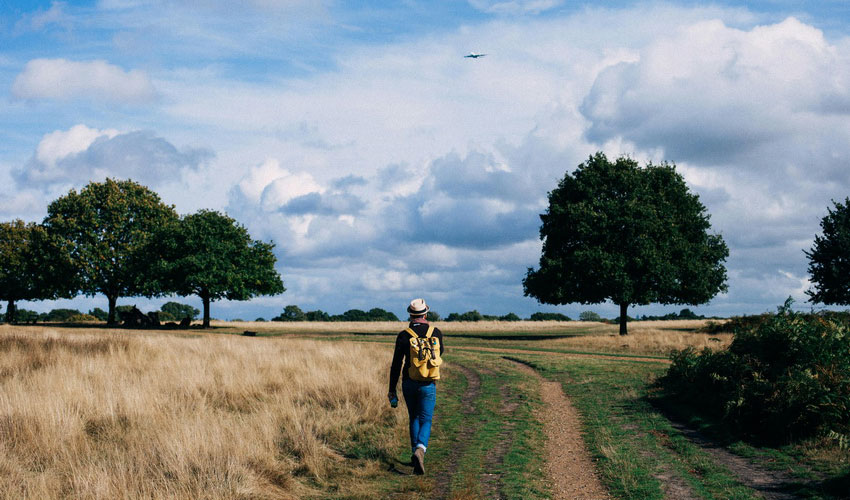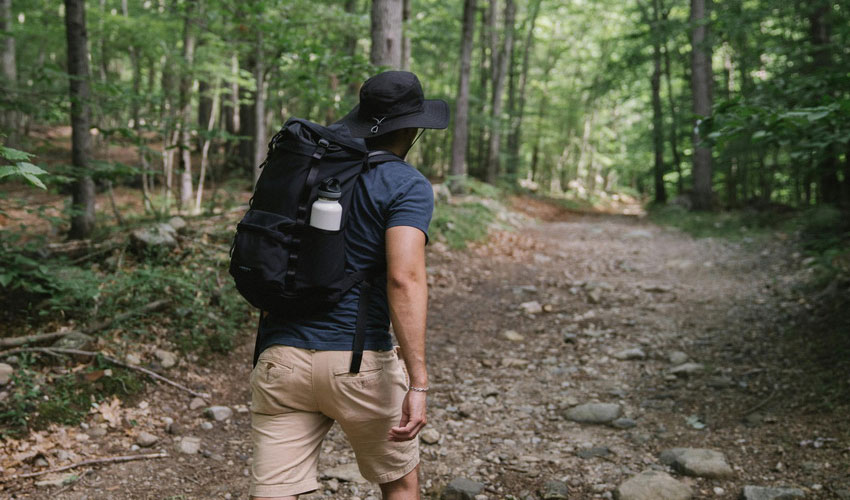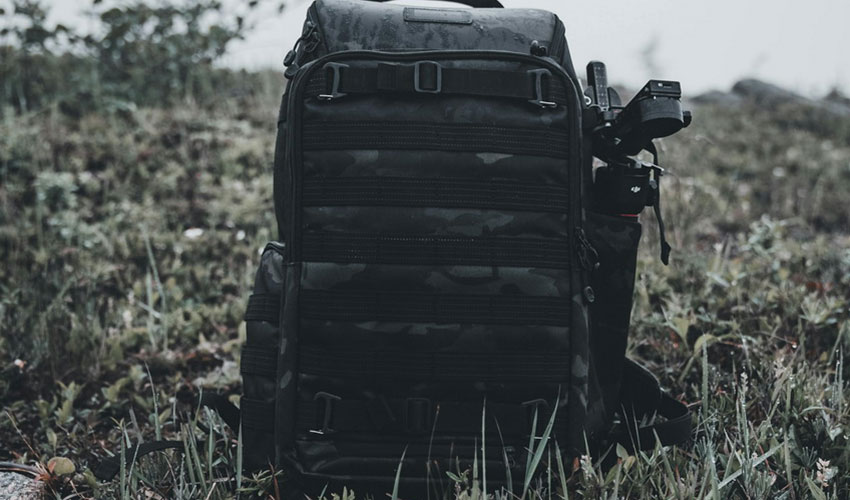Rucking – A Simple Fitness Regime
Who does not like a shortcut? Just take a look at any patch of grass at the corner of a pavement as it's usually worn down by eager feet trying to save a few precious seconds on their way. But when it comes to the world of fitness, finding genuine shortcuts is a rare feat. One of the few exceptions that stand out is Rucking, which is the practice of walking while carrying a weighted backpack. Intrigued by its potential, I decided to dive into this fitness trend, committing to 12,000 steps a day for an entire week, rucksack strapped tightly to my back.
Originally rooted in military training, Rucking has gained widespread popularity in recent years, thanks to its simplicity and impressive effort-to-reward ratio. By simply adding weight to your walks, you increase the intensity of your workouts, effectively engaging your heart, lungs, legs, and core—all of which contributes to improved fitness and overall strength. Imagine transforming an ordinary trip to the store into a powerful workout session; that’s the beauty of Rucking. With the promise of turning my daily fitness fix into something as enjoyable as a stroll in the park, I donned my rucksack and embarked on my journey. Here are five insightful lessons I gleaned from my week of Rucking:

The Rucking Method is Accessible:
Embarking on a new type of exercise often comes with a steep learning curve, leaving many unsure of where to begin. I vividly recall my early teenage attempts at the gym, which primarily consisted of a few clumsy bicep curls and aimless wandering on the treadmill. However, my experience with Rucking was refreshingly different. From the moment I laced up my shoes and strapped on my backpack, I felt a sense of familiarity; after all, I had walked with a backpack before. Rucking turned out to be simply that, walking with added weight. Once I recognised how the extra load subtly shifted my centre of gravity, I was ready to hit the ground running. It's important to highlight that while I equipped myself with a high-quality backpack and weight plates from GoRuck, specialised gear is not a prerequisite for getting started. If you're eager to try Rucking without investing in new equipment, consider this: you can easily improvise with items you already have at home. For instance, a large, heavy water bottle can serve as an excellent weight when you toss it into your backpack. Start light and gradually increase the load as you become more comfortable, and you'll be well on your way to enjoying the numerous benefits that rucking has to offer.
Rucking is a Versatile Activity
Instead of trying to squeeze in dedicated long rucks into my schedule, I decided to integrate a weighted backpack into my daily routine, which has proven to be incredibly effective for me. I highly recommend keeping your weighted bag right by the front door; if you have to search for the rucksack and the weight plate, it can be a hassle that discourages you from using it. But when it’s conveniently located at the entrance, slipping it on becomes a seamless part of your day. I wear my weighted backpack for various activities such as dog walks, office days, and even short trips into town. In fact, once I’m out of the house, I rarely take it off. With this approach, I’ve easily managed to accumulate around 12,000 steps a day without it feeling like an arduous task. Rucking is particularly beneficial for those who find it challenging to incorporate movement into their busy lives. By elevating the intensity of regular walking, you can reap greater health benefits from even a brief outing. Living in Chiang Mai, where the heat limits how far my dog can comfortably walk, we often stick to shorter strolls. Adding a weighted ruck allows me to maximise the exercise we do get, making every step count.
Rucking can Aid Building Strength
Wearing a weighted rucksack while walking undoubtedly adds a layer of challenge, but there’s a powerful rationale behind this choice: the multitude of benefits it offers. Rucking is not just a walk in the park; it transforms a simple lower-body activity into a full-body workout, engaging your quadriceps, hamstrings, and gastrocnemius—the key muscles in your thighs and calves—as they work to bear the additional load. Over time, this extra weight can lead to noticeable gains in strength and bone density, particularly if incorporated into your routine consistently. While Rucking may not build muscle mass to the same extent as traditional strength training, it still contributes positively to muscle development, especially when it comes to enhancing your overall fitness. Moreover, Rucking does wonders for your core strength and the postural muscles in your upper back. Balancing the weight on your shoulders not only promotes better posture but also challenges your stability and endurance. After tackling hilly terrain with a fully loaded rucksack, I often experience that familiar dull ache in my thighs. It is like a sensation akin to the satisfying burn of an intense leg day. Additionally, I’ve noticed my upper traps feel the strain, especially when I’m carrying heavier loads, highlighting how Rucking engages muscles that might otherwise be overlooked in standard walking. In essence, Rucking is a simple yet effective way to elevate your walking routine, offering a wealth of physical benefits while making each step more purposeful. If you’re looking to enhance your fitness journey, incorporating Rucking into your routine could be the transformative challenge you’ve been seeking.

It’s not Solely a Muscles Workout
Strength is only one benefit to come from Rucking. You’ll also call your heart and lungs into action for cardio perks, and you’ll work them harder than if you simply went for a non-weighted walk. You’re carrying extra weight, and that extra weight costs you energy to move. It’s going to increase your oxygen consumption and heart rate if you’re trying to maintain the same speed of walking. To test this, I did three 1.2km loops of my undulating local park – once without the rucksack, once carrying 15kg and once with 35kg, all at the same pace. According to my special watch, the first lap burned an estimated 102 active calories and my heart rate averaged 88bpm, while the final lap used 119 active calories and my heart rate averaged 108bpm. Perhaps this isn’t the most mind-blowing difference, but I found these incremental jumps added up over the course of the week. Regularly raising your heart rate can help improve cardiovascular fitness too, and by hiking it higher you’re more likely to experience this benefit. As someone who exercises regularly, this final fitness perk wasn’t as much of a pull factor for me. But I did draw another less expected benefit from my rucking ventures: I enjoyed the challenge. The benefits are as much physical as they are mental. I always say that you never leave the house to go for a ruck and come back in a bad mood. It’s a great way to clear your mind or get outside and get some fresh air, all while getting a good bang for your buck as far as time and fitness is concerned.
The Importance of the Weight in Your Rucksack
While this point may appear at the end of the list, it might just be the most critical: the experience of Rucking with a light backpack differs significantly from that of Rucking with a heavy one. This distinction underscores the importance of selecting a weight that suits your individual capacity and the specific nature of your activity. For a general guideline, I suggest starting with a load of 30 pounds (approximately 15 kg) for men and 20 pounds (around 10 kg) for women. However, it's crucial to remember that these figures are not one-size-fits-all starting points. You can kick off your Rucking journey with any backpack you have at home. Just add some weight, whether it’s a water bottle, some textbooks, or even bags of rice and you’re ready to go! As your strength and fitness improve, you can gradually increase this weight. Once you’re comfortably carrying more than 5 kg, it might be worthwhile to invest in specialised Rucking plates and a well-designed rucksack for added comfort. For instance, our Rucker 4.0 rucksacks are engineered to accommodate two plates, allowing serious trainers to ramp up their load to 60 or even 75 pounds when preparing for challenging hikes. While heavier weights can induce significant strength adaptations, it's crucial to strike a balance. Avoid lifting a load that's too heavy to prevent injury. The key is to select a weight that allows you to maintain a conversation while Rucking. This is our benchmark, “walk and talk.” Your heart rate will elevate, but you should still be able to breathe comfortably and engage in dialogue. From personal experience, having a consistent weight of around 92 kg, I found that alternating my rucksack weight between 15 kg and 30 kg worked wonders for my training. I opted for the lighter load during longer walks or casual strolls, while the heavier pack became my go-to for more intense sessions. The impact of these heavier workouts was palpable in my muscles, especially my thighs and traps. Conversely, by the end of the week, carrying 15 kg felt almost effortless, becoming a standard part of my routine. In essence, finding the right weight and adjusting it to match your fitness goals can dramatically enhance your rucking experience.

Will Rucking be my Regular Exercise?
Although my Rucking challenge has officially concluded, my backpack and weights still occupy a spot by the front door, a testament to the impact this experience has had on my routine. While I no longer rely on them with the same fervour as during my dedicated seven-day streak, I still incorporate them into my life in meaningful ways. I'm not bound by a daily step quota or the necessity to strap them on for every walk, but I do find myself reaching for them during outings with my dog or on other adventures. Why do I continue this practice? Simply put, it allows me to transform a casual stroll into a spontaneous workout making it a particularly appealing option on those hectic days when fitting in a more structured exercise session feels nearly impossible. I genuinely relish the challenge that Rucking presents, and I invariably notice an improvement in my mood and energy levels after a brisk weighted walk. For all these reasons and more, I’m optimistic that Rucking will continue to thrive as a fitness trend. It simply is a sustainable and invigorating way to stay active amidst life's demands.
''Its not the load that breaks you down, it’s the way you carry it.'' – Lou Holtz






















